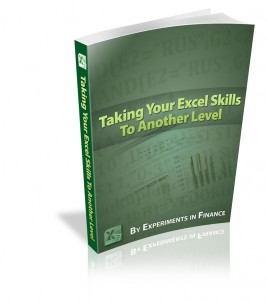One of the proven and advocated tenets in value investing is dollar cost averaging, and it goes hand-in-hand along with the idea that matching market performance is easy (just buy the index), but beating it is hard. But does it work?
Here’s a simple calculation to show that it does. I downloaded monthly historical prices for SPY and compared returns if I had arbitrarily decided to invest $100,000 on April 2, 2001 and hold SPY for five years, or invest $5000 over the next twenty quarters (for a total of $100K) instead. Below are the returns:
| Method | Value on Jan 3, 2006 | % return |
| $100,000 invested all at once on April 2, 2001 |
$107,817.70 | 8.49% |
| $5,000 invested at the beginning of every quarter for 20 quarters | $123,108.60 | 23.11% |
| Method | Value on July 3, 2003 | % loss |
| $100,000 invested all at once on April 2, 2001 |
$80,854.34 | 19.14% |
| $10,000 invested at the beginning of every quarter for 10 quarters | $99,462.33 | 0.54% |
***************************************************
Look Good at Work and Become Indispensable Become an Excel Pro and Impress Your Boss

***************************************************


How should I invest for 3-7 years out? | Experiments in Finance
[…] On the stock portion, to be entirely safe, you should probably consider dollar-cost averaging into the ETF or mutual fund you’ve chosen. This is a proven-to-be-successful tenet for buying stocks, which is a real rarity. Keep in mind that if you do this, you might be better off investing in a mutual fund rather than an ETF because most brokerages will require commissions for trading ETFs, whereas you may be able to regularly invest in no-load mutual funds without paying extra comissions, because most mutual funds are already set up for this type of regular investment. Still, you might want to calculate the fees on the index fund and weigh them against the trade commissions for buying an ETF. In my case, I found that the $10 per trade on an ETF easily outweigh the limited selection of no-load index funds that I have access to, and I’ve got the discipline to put regularly put in and calculate the # of shares to do this myself rather than use an automated system. […]